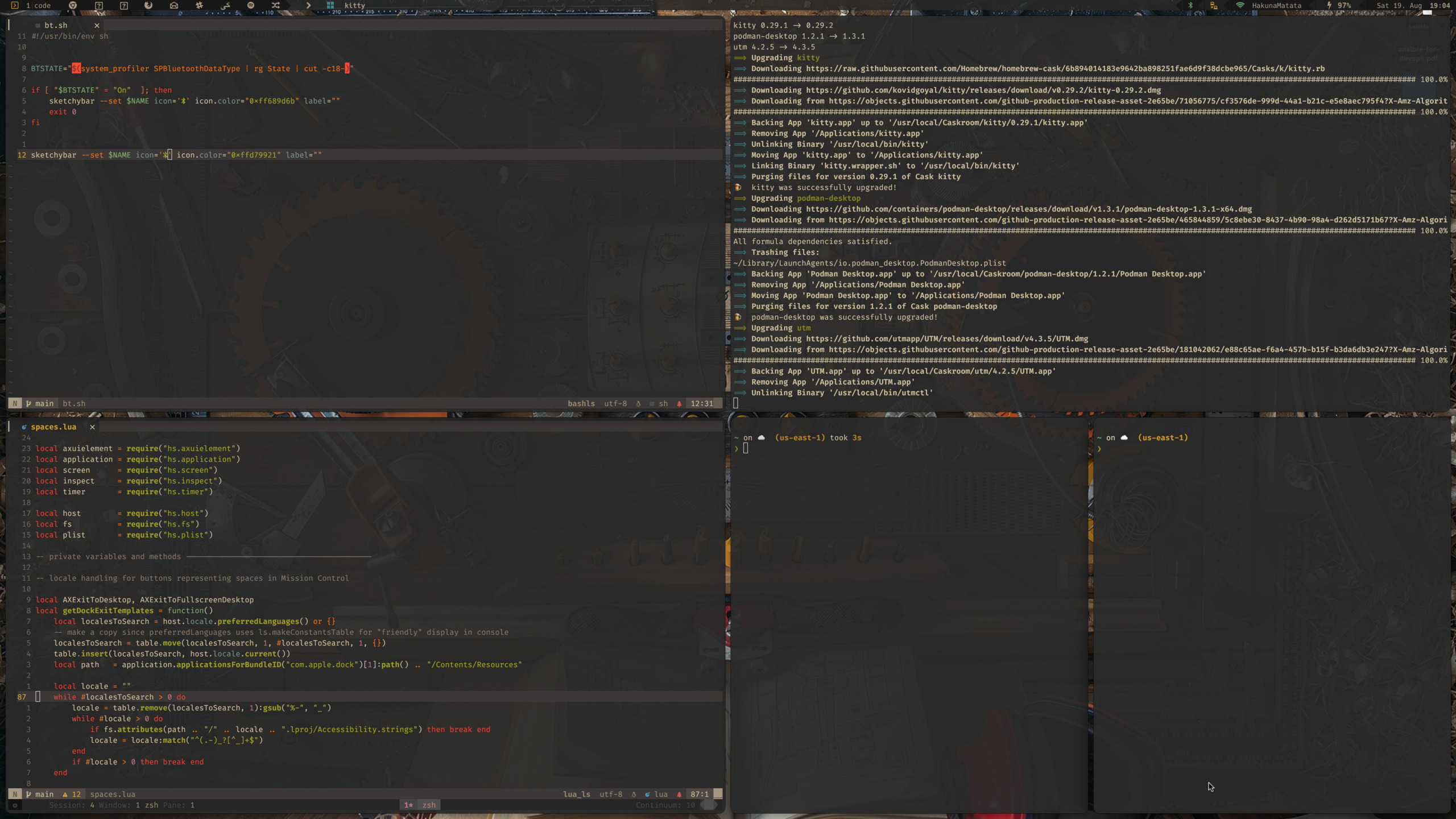I thought about this solution, as it is the "cleanest", however I need on total 4 firefox derivatives. Unfortunately, when looking deeply into the options, i haven't found 4 that are similarly trustworthy, well maintained etc. Also i have my firefox config fully figured out, it works and is as private as i want them, without some maintainer forcing their opinion on my use cases. Plain firefox is the easiest to configure, as it's like a blank start. However i might be wrong here and am open to suggestions :D
cloudwanderer
Unfortunately that is not what I am looking for. I am already using named profiles. Like i stated in my original post as well as my answers below, this only works from Inside Firefox, however from the operating system pov it is still treated as the same application. Which means:
a) When i share the work profile, i also share all other profiles, as they are all Firefox b) When I quick access firefox via spotlight, i end up at the nearest, random profile / instance of firefox. c) There is no way to differentiate the profiles on an application level. d) I can not assign the instances to different desktops, as they are all Firefox.
I had a similar idea, however i haven't seen a markdown plugin, that is well maintained and at the same time simple enough, so that the core, in this case markdown, can easily be replaced with a completely different engine, asciidoctor.
Any recommendations for that?
I also thought about changing neorg, but the missing support for treesitter is a k.o. for asciidoc.
The conversion is not an issue, there are already multiple tools for that, including a browser plugin with auto refresh.
However the tight integration with the editor, in this case neovim, is missing. At the bare minimum it should show the changed area curently being edited, ideally scroll with the editor scrolling like with common markdown extensions. Currently it just shows a static site that refreshs.
Good choice, however the number of supported languages is limited to things with language server or treesitter support. Meaning languages without this, like asciidoc, is not supported and might never be
I recommend to start with kickstart if you prefer to customize https://github.com/nvim-lua/kickstart.nvim or Lunarvim for a full IDE experience to see what's possible and go from there https://www.lunarvim.org/de/
Most works out of the box then. Start there and customize further to your needs
It looks very interesting!
But I don't see the unique selling point of it compared to alacritty and kitty, besides web-enabled. Is there anything that it does better than these 2?
That looks promising, especially since my current status bar is also just a collection of shell scripts, so that might be easier to switch
Thanks! That looks exactly like what I was looking for. I hope it works as promising as it looks :)
Thanks, that was a very interesting read!
I forgot one essential tool, where I need a recommendation for: spotlight. I use it to switch quickly between applications or to folders. Keyboard shortcut, first letter of the application name and enter... I know there are solutions, but I only heard from Ubuntu, which I don't want. Anything simple and fast you can recommend?

That sounds like an interesting idea, I'll test that out, thanks!